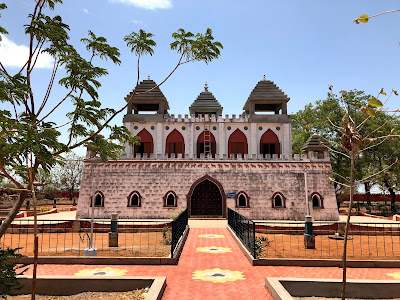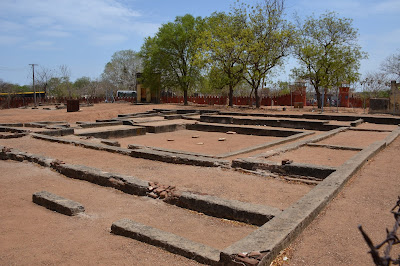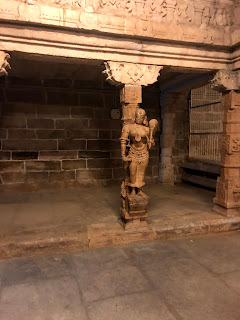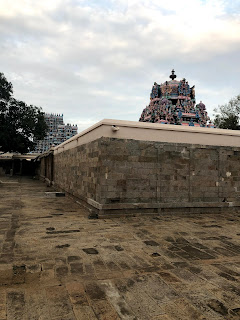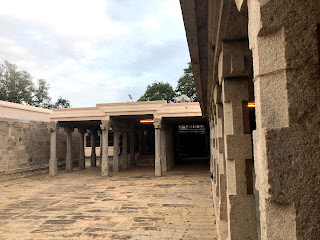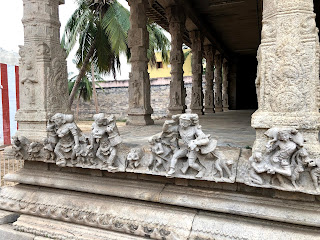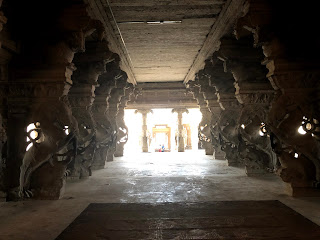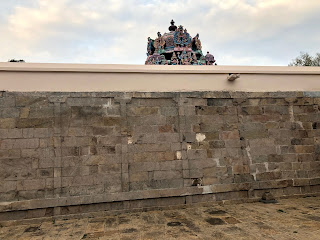Templed out? Let's take a break from temples and explore some history. I will try my best to be brief.
After the great Vijayanagar Empire based in the Deccan, with Hampi as its capital, took control of the Tamil speaking lands in the 15th century, they appointed Telugu speaking governors called the Nayakkar in the Tamil lands. The administration of the Nayakkar was formalized during the rule of the powerful Vijayanagar Emperor Krishna Deva Raya in the early 1500s. A large part of the Tamil country including the most southern region was controlled by the Madurai Nayakkar. After the Vijayanagar Empire came to an end after its defeat at the hands of the Deccan Sultanates at the battle of Talikota in 1565, the Nayakkar became independent kings. In the late 1500s, the Madurai Nayakkar organized their territory into 70 Paalayams and appointed minor rulers called Paalayakaarar to rule them. Most were from the Deccan and spoke Telugu or Kannada. Few were Tamil. It was a feudal system where the Paalayakaarar or Polygars as the British called them, paid tribute to the king and were expected to provide men and material in times of war. One such Paalayam was located here at Panchalankurichi. After the Madurai Naykkar were defeated by the Nawab of Arcot, Madurai came under the Nawab's rule and the controversial hero Muhammad Yusuf Khan or Maruthanayagam Pillai controlled the Madurai territories. Subsequently all of the lands came under the rule of the British East India Company. During this transition the Palayakaarar revolted against the British. What ensued were the Polygar Wars from 1799 to 1805 when the Paalayakaarar and the British fought a number of battles before the British eventually prevailed.
At the time of the Polygar Wars, Panchalankurichchi was ruled by a Telugu speaking chieftain called Veerapandia Kattabomman or Gettibommu in Telugu. He was the last of a long line of Kattabommans and was one the most stubborn of the resistors of British takeover of the Tamil country and was eventually captured and hanged. He became a folk legend among the common people and his story has lived on. Some historians believe that the story is bigger than the actual man and has grown with time. Some even claim that he was a bandit. In current political times, the fact that he was a Telugu ruler in a Tamil land has led some narrow-minded Tamil nationalists to try and diminish his legacy.
Sorry - I am a history buff and get carried away.
The pretty building that you see as you enter is a memorial built by the Tamil Nadu government in the 1970s. To the right lie the ruins of Kattabomman's fort and palace.
Visited Aug 2019. Base Thoothukudi
